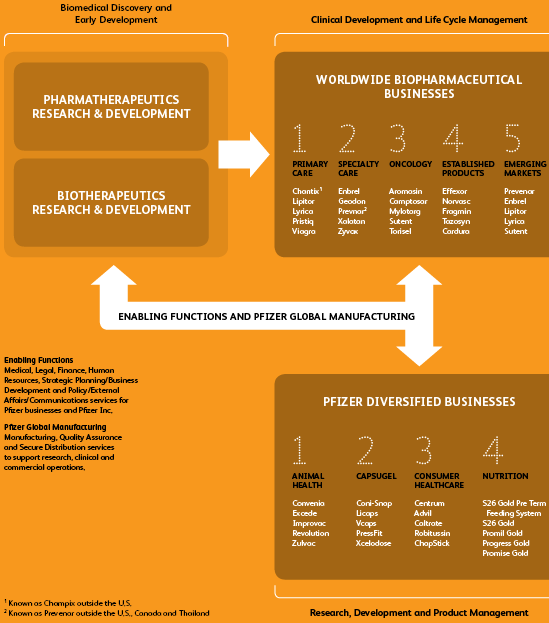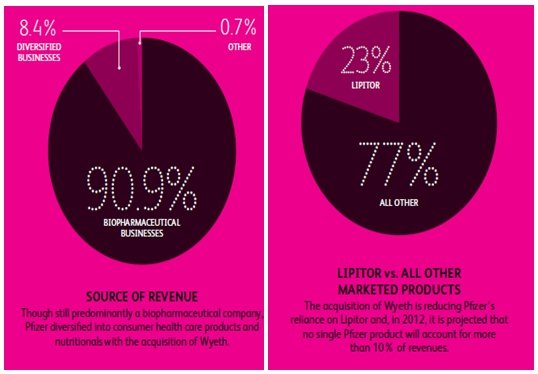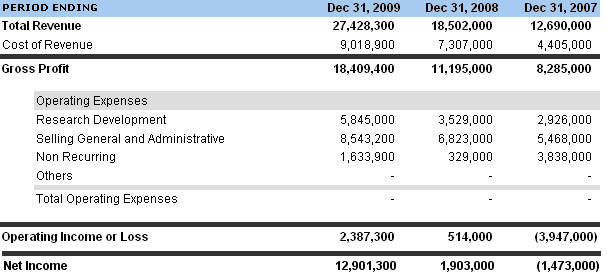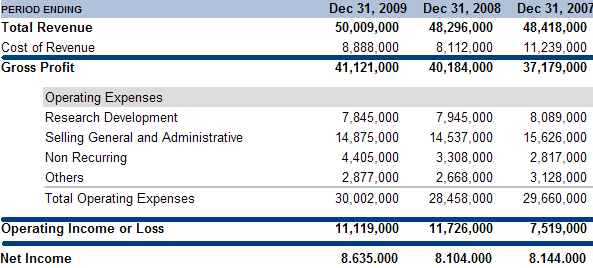Executive summary
With the advent of innovative technologies and recent shifts in the consumers’ culture, more and more companies realize the importance of effective operations management.
Due to the present day realities of intense competition in the pharmaceutical arena, the leading companies cannot afford to put emphasis on only one aspect of quality improvement. Underestimating the significance of any of the company’s many sectors may result in decrease in the company’s revenues and lack of customers’ trust in the brand.
Taylor (1998) noted that in the case of private-sector companies, the mission of the operations function is usually expressed in terms of profits, growth and competitiveness; in public and voluntary organisations, it is often expressed in terms of providing value for money (p. 74).
The mission of pharmaceutical companies such as Merck & Co. and Pfizer Inc. requires their commitment to public health. The strategies of quality improvement and increasing benefits are inseparable and interrelated. In fact, Merck always emphasizes a quote from its founder, George Merck: “We try never to forget that medicine is for people. It is not for the profits.
The profits follow, and we have remembered that, they have never failed to appear”. With the aim of meeting the growing demands of present day pharmaceutical market, the companies should couple the R&D effort with strategically savvy marketing to develop and market products.
Effective operations management requires integrative approach to development of various sectors of a firm. This paper discusses the comparative analysis of operations management strategies of the world’s leading pharmaceutical companies Merck & Co. and Pfizer Inc., critical evaluation of their effectiveness, and recommendations for improving their operations focus.
Introduction
Effective operations management is important for the success of any organization. Operations management in the pharmaceutical sector focuses on carefully managing the processes to develop and market products and services. A great deal of focus is on efficiency and effectiveness of processes. At the present moment the issue of operations management is more topical than ever being at the center of all business modifications and Enterprise Resource Planning.
Due to the recent shift in customer preference and advent of innovative technologies, the prompt response to these changes and continual improvement of quality became the primary goal of operations managers. The questions about quality are central to all stages of operations management.
Slack et al (2010) noted that “it is they [operations managers] who must find the solutions to technological and environmental challenges, the pressures to be socially responsible, the increasing globalization of markets and the difficult-to-define areas of knowledge management” (p. 8).
The main principles of Total Quality Management, such as customer satisfaction, employees’ involvement and continuous quality improvement, are areas of focus at these companies. Operations management is therefore critical to organizational success for these companies. There are various stages of operations management starting from the conception / designing of a product until it’s delivery to the market.
Within the birth stage, where a product is conceptualized, most innovations take place. The second phase is that of growth. This is a very critical stage for operations management. Langabeer (2008) noted that “The highest level of risk and investment is performed early in the supply chain, significantly prior to the commercialization and full-scale production and distribution” (p. 346).
Previously the pharmaceutical companies considered this principle while developing their operations strategies and making a decision to give preference either to Research and Development (R & D) sphere or to strategic marketing of their products. For example, Collis and Smith (2007) noted that “Merck was known for its research expertise, while Pfizer was considered a marketing powerhouse” (p. 1).
This difference in strategic focus for the companies had a significant impact on the direction they took viz-a-viz innovation, change and competitiveness. However, despite the differences in their strategies, both drug manufacturers faced similar difficulties and had to look for ways to enhancing efficiency, improving the quality and increasing consumers’ satisfaction with the products and services provided.
Drug development strategies
The innovative method of combinatorial chemistry and advent of computer modeling stimulated the development of new drugs, accelerating the research process and allowing pharmaceutical companies to screen thousands of new compounds every year. For this reason, within the recent decade the approach to drug development has been revolutionized.
Previously most drug compounds could be isolated from natural elements or synthesized, but the recent technological and scientific progress changed the existing state of affairs. At the present moment these elements may be designed, and pharmaceutical companies cannot afford to underestimate the importance of investing into the R & D sphere.
Nevertheless, Collis and Smith (2007) noted that “the focus of clinical trials had shifted from proving safety and efficacy to generating a label that favorably positioned the drug against competitors” (p. 3). At present, alongside research of new disease pathways, creating of me-too drugs takes a significant focus of the R&D effort.
One of the considerations of the R&D departments is designing the drug similar to the blockbusters of other companies so as to compete with them in the market. This results in more intense competition in the sector as the period within which a drug can benefit from its exclusivity in the market has decreased significantly. Collis and Smith (2007) noted that “only about 14% of drugs approved by the FDA between 1998 and 2002 were considered by the agency to be ‘a significant improvement’ over products already on the market” (p. 3).
R & D at Merck & Co. and Pfizer Inc.
Merck & Co. with its focus on research has always been known as a science-driven company that made initial breakthrough in the development of antibiotics, hormones and streptomycin, as well as innovative treatment for tuberculosis. The company has been a leader in its sector.
In the1990s, Merck’s senior management decided to sell its generics division with the aim of focusing on designing novel mechanism of action (MOA) drugs. Pfizer, another of world’s leading pharmaceutical companies, succeeded mostly through its acquisitions and effective brand marketing. This company was defined by Collis and Smith (2007) as a “hunter, not a gatherer of new drugs” (p. 12).
Merck & Co. always had a high rate of FDA regulatory approval of its products. The primary goal of Merck was to develop blockbuster drugs in diverse therapeutic areas. Merck’s R & D focus has been to investigate new MOA drugs and diseases pathways. Collis and Smith (2007) noted that “Its willingness to exploit science outside of its traditional expertise allowed Merck to enter new fields, such as diabetes in 1986, bone disease in 1991, and cancer in 2004” (p. 10).
Over the years, the company’s Human Resources Department has also focused on hiring the best scientists from diverse areas of research expertise. Merck’s eventual fall in stock price by 2005 was caused by the failure of two potential blockbuster drugs in late stage of clinical development as well as troubles with Vioxx withdrawal in 2004.
As noted in Merck’s 2009 Annual Report, the investment in R & D has been increased and “for the first time in its history, Merck is conducting studies on ten products in the final phase of clinical testing prior to a potential market launch” (p. 16). The company’s continued focus will be on nine key disease areas: cancer, heart disease, diabetes and obesity, infectious diseases, neuroscience and eye diseases, respiratory and immune-related disorders, women’s health and hormonal conditions.
According to Merck’s 2009 Annual report, the emphasis on innovative thinking and emerging new growth markets will be beneficial for development of new drugs. Improvement of human health and well-being remains the main focus of Merck; the company joined the Wellcome Trust organization and participates in not-for-profit mission of development of vaccines for the poor.
As opposed to Merck, Pfizer grew quickly mainly through mergers and acquisitions, although, recent investments in developing and launching new drugs has been disappointing. Collis and Smith (2007) noted that “Pfizer had not developed a blockbuster drug in its own lab since 1998 when it launched Viagra” (p. 12).
Pfizer’s 2009 Annual Report does note that “we must take prudent risks… recognize that not every investment will succeed in this business; carefully monitor our investments and know when to stop funding projects that are not meeting their goals” (p. 17). The senior management gives emphasis to investing with the aim of winning. In 2009, “sharply focusing on customer needs”, two development research units were formed within the company.
These were Pharma Therapeutics R&D and Bio Therapeutics R&D, at the present moment working on 133 programs at various stages of clinical development. Oncology, analgesics, Alzheimer’s disease, diabetes and psychoses are the six “invest to win” areas on which Pfizer’s internal R&D efforts are focused. In addition, Pfizer’s R & D units are partners with other world class scientific teams in other companies, academic and government organizations.

Marketing strategies at Merck & Co. and Pfizer Inc.
Historically, Merck’s management was inclined to underestimate the importance of implementing strategic marketing strategies. As cited in Collis and Smith (2007), one of the company’s marketing managers admitted that they could sell only the best drugs while “Marketing was ‘allowed’ in much later in the process.
It was a good strategy, it worked at the time” (p. 11). However, the case with its blockbuster drug Zocor proved that this strategy was ineffective. This drug was aimed at reducing cholesterol and became a blockbuster in its sector on the market since its introduction in 1991.
However, Lipitor, similar but more concentrated formulation introduced by Pfizer in 1996 became more popular due to the company’s marketing efforts focused on demonstrating its benefits. Merck has since put more emphasis on customer relationship management and innovative marketing strategies, realizing the importance of influencing the health care professionals’ as well as consumers’ opinion.
Implementing the new data-driven and customer centric approach, the teams at Merck were organized around the main blockbusters, more interactions with health care providers were planned and more public attention was drawn to raising awareness of clinical trials. As noted in Merck’s 2009 Annual Report, marketing expenses have increased by 6.8 %, while their ratio to total revenues increased insignificantly (from 28 % to 29 %).
On the other hand, Pfizer’s marketing strategies have been rather effective and could be even defined as aggressive. Collis and Smith (2007) noted that “Pfizer was known for having effective marketing and had the largest sales force in the industry with nearly 9, 000 reps” (p. 12). Pfizer invests much of its operating cost on training its marketing representatives. Thus, every rep has to fill a daily report including number of calls and visits to doctors.
The training of new reps is intensive presupposing about 40 simulated calls to doctors and learning and presenting 30-second briefs. The company’s mission is focused on influencing the doctors’ prescribing behavior at least for me-too drugs, identical to products of other companies.
In Pfizer’s 2009 Annual Report, the priorities of the company were defined: “Pfizer is working in partnership with patients, caregivers, physicians, payers, health ministries and local health care providers around the world, leaving them better equipped to meet their most basic challenge – keeping people healthy” (p. 64).
This logo demonstrates the company’s aim in paying more attention to every element of the drug manufacturing chain and increasing its efficiency. Pfizer is registered on Facebook and Twitter taking advantages of social media with the aim of establishing rapport with potential consumers and health professionals as well as providing additional information on its products.
Mergers & Acquisition and External Collaborations at Merck & Co. and Pfizer Inc.
Merck managed to avoid merging with other large drug companies because it contradicted the company’s growth philosophy. The company’s management gave preference to organic growth and increasing the R & D budgets.
As discussed in Collis and Smith (2007), Merck’s management believed in science as the primary value of the company but “left the option of a merger on the table: ‘It’s evident to us that large-scale mergers haven’t been very successful in the pharmaceutical industry, but we will still consider any situation that might make sense for us” (p. 10).
However, the top managers were coming around on the importance of external partnership with the aim of gaining competitive edge in the market. In 2009, to grow and diversify, with a deeper pipeline, Merck and Schering-Plough merged to create a new kind of healthcare company.
The senior management of the two merging companies concentrated on reasonable integration of their operations and human resources. Merck and Schering-Plough combined their efforts putting trust in R & D for the purpose of developing a stronger product portfolio, new areas included cardiovascular, infectious diseases and women’s health). Merck has since also signed over 50 licensing and alliance agreements since last year.
At present Merck takes lead in doing pharmaceutical licensing deals. Zhong (2010) noted that “Figures from global consultancy Deloitte revealed that between January 2005 and September 2009, Merck announced about 130 pharmaceutical licensing deals, followed by F. Hoffmann-La Roche Ltd. and Pfizer Inc. with no less than 100 licensing deals each” (International Information Group). Merck’s active collaboration with pharmaceutical companies and academic institutions is an essential component of the company’s operations management strategies.
Today Merck is seen as a global healthcare company implementing the solutions-oriented approach to providing healthcare services instead of developing drugs only.
The merger of Merck and Schering-Plough is hoped to result in global growth and penetration into new world’s markets. In 2009 both companies launched a number of new products independently from each other, while several products were launched due to their combined efforts (for example, Januvia aimed at treatment of type 2 diabetes).
The successful merger has resulted in increased annual sales of the 10 blockbuster brands of their portfolio (more than USD 1 billion for the combined portfolio in 2009). The worldwide sales of the combined companies were raised up to USD 27.4 billion. Looking beyond 2010, Merck is driving towards a leaner, more flexible cost structure.
Pfizer is known for its aggressive acquisition(s) of other drug manufacturers to boost revenues and filling gaps created by drug patent expirations. The first acquisition of Warner-Lambert in 2000 was preceded with their cooperation on marketing Lipitor, the market blockbuster.
Similar was the case of merging with Pharmacia after effective cooperation for selling Cox-2, drug aimed at treating arthritis. Though some scientists were lost after the reorganization of these companies, Pfizer continued research on more than 75 % of Pharmacia’s projects.
In 2009 Wyeth was acquired for the purpose of expanding the products pipeline. The main benefits of Pfizer’s merger with Wyeth was broadening and diversifying of the company’s product portfolio. For example, providing other health care services besides drugs became a new source of revenue for Pfizer, while its dependence on sales of blockbuster Lipitor as the main source of income was decreased significantly.

Response to current challenges at Merck & Co. and Pfizer Inc.
In 2006 Merck faced the litigation liability for its product Vioxx. The drug was voluntarily withdrawn from the market by the company. There were around 30, 000 law suits which the company decided to fight on a case by case basis initially. Miller and Jentz (2010) noted that after undergoing years of litigation, Merck agreed “in November 2007, to settle all outstanding cases concerning Vioxx for USD 4.85 billion” (p. 62).
Another important issue was expiration of several significant drug patents, such as for Zocor and Fosamax. In 2005, in anticipation of the revenue loss, Merck started a restructuring program. According to this plan, five plants were to be closed and about 7,000 employees were to be let go in a phased manner. Nine priority disease areas were chosen instead of dissipating R&D efforts on numerous small development programs.
Pfizer’s management has also been struggling against the imminent patent expirations of such blockbusters as Lipitor and Celebrex. The patents for Bextra and Zoloft were lost causing notable loss in the company’s revenues. In 2005 the company announced the beginning of the cost-cutting program presupposing plant closings and reduction in human resource.



Table 4 Comparative analysis of Merck and Pfizer.
Recommendations for improvement of the existing quality approach
Though both Merck & Co. and Pfizer Inc. can be defined as the world’s leading pharmaceutical companies with a number of new molecular entity drugs in the pipeline, their approaches to operations management are different.
Pfizer and Merck should strike the right balance between investing into R & D as well as their global marketing approach for the purpose of implementing the systematic principle of quality management.
Merck’s focus on science and research is praiseworthy, however, it has to adapt to the realities of the contemporary world and focus on innovative and strategically savvy marketing and customer relationship management. Merck could adopt Pfizer’s experience of involvement of employees through reps’ training and raising awareness of the products influencing the doctors’ prescriptions as well as making inroads via social media.
Pfizer’s emphasis on acquiring and commercializing products and merging with other companies (with the aim of expanding the pipeline) appears to be effective, although one has to wait to confirm whether this strategy will ultimately succeed in filling huge gaps in revenue. Hartmann (2002) noted that continuous quality improvement requires taking preventive measures and proper planning of the company’s development strategies. (p. 5)
Despite the fact that Pfizer’s revenue-focused philosophy has been rather effective, adapting to the realities of the current intense competition in the sphere, the company should put more emphasis on conducting trials in its own labs, while the principle of continual quality improvement is of crucial importance for quality management.
Though Pfizer is a for profit company, it should not loose focus on organic R&D efforts as well collaborating with scientific partners to develop novel drugs. Pfizer’s significant dependence on its main blockbuster Lipitor is rather unwise as its patent expiration can cause serious gaps in revenue for the company.
Pfizer’s merger with Wyeth is attempting to address this issue by widening and diversifying the company’s pipeline, adding new sources of income besides Lipitor sales to the company’s total revenues. Evens (2007) noted that “The axiom, “an ounce of prevention is worth a pound of work or problems”, is an excellent justification for risk management” (p. 29). It is important to look for new opportunities for expanding one’s pipeline and improving the quality of the provided services and increasing customer’s satisfaction.
Merck & Co. and Pfizer Inc. should continue to focus on effective operations management, combining the R & D efforts with strategically savvy marketing, broadening the companies’ pipelines and making contribution to the general well-being of patients.
These leaders in the world’s pharmaceutical arena implement certain principles of quality management, such as customer focus and continual improvement (Merck) and mutually beneficial supplier relationship and factual approach to decision making (Pfizer).
However, they could benefit from adopting the whole range of effective operations management principles, such as mutually beneficial supplier relationships, factual approach to decision making, continual improvement, system approach to management, involvement of human resource and customer focus in the companies’ global strategies.
Personal reflection
Pfizer Inc. and Merck Co have been kind of ‘specializing’ more in particular areas of the pharmaceutical drug arenas. It is in these areas that they have concentrated most of their efforts. In general terms and principles, they both envision their role as part of the communities they are trying to serve and their ‘duty’ to help them improve their general health and well being.
In this respect, operations management is essential to deliver the adequate products and offer quality services in order to achieve stable and positive results. Thus, the role of operations management is crucial; especially when one considers dealing with products and services that affect individual’s health directly and that of the community.
In terms of operation management, Pfizer Inc. and Merck Co have been traditionally somewhat different inputting emphasis on different aspects of the drug development process and companies’ organization. Preference to organic R & D efforts (Merck) or focusing on brand marketing and merger and acquisition strategies (Pfizer) have been a paradigm shift for both companies.
Both strategies could be effective in their own way resulting in these companies’ leadership in their sector. However, with the present day intense competition in the market, effective quality operations can result in a company’s success. Customers’ satisfaction can be measured by the gap between their perception and expectations.
Merck and Pfizer should set high quality standards and make continuous quality improvement the basic principle of the company’s philosophy. In the operations management of both companies there is scope for further improvement. Critical analysis of the current state of affairs considering the main principles of effective operations management is required for further development of their strategies.
Pfizer’s focus on brand marketing and customer relationship management has contributed to more quality exchange as well as its increased sphere of influence for both consumers and health care providers. Focusing to enhance communication between doctors and patients, Pfizer has been a conduit for influencing public opinion and effectiveness of company’s products and services.
The focus on marketing and sales function has been an advantage for Pfizer, and should be adopted by other companies. At the same time lack of company’s internal R& D growth and investment results in significant decrease of revenue. Risk management techniques could be helpful for estimating the company’s losses caused by emphasis put on one or two blockbuster drugs.
Going from one end to another, Merck’s strategies have been focused on science and R & D. The excellence in scientific R & D should be coupled with innovative marketing strategies, otherwise the potential of new products will not be fully realized.
The comparative analysis of Pfizer Inc. and Merck Co operations management strategies proves that only an integrative approach, implementing the whole range of quality management principles, paying enough attention to R & D, marketing and employees’ involvement and customer focused and other strategies, can be beneficial for quality improvement, enhancing customers’ satisfaction and increasing the company’s revenues.
Reference List
Collis, D. and Smith, T. (2007). Strategy in the twenty-first century pharmaceutical industry: Merck & Co. and Pfizer Inc. Harvard Business School.
Evens, R. (ed.) (2007). Drug and biological development: From molecule to product and beyond. New York, Springer.
Finance Yahoo. Merck & Co. Inc. (MRK). Web.
Finance Yahoo. Pfizer Inc. (PFE). Web.
Galloway, P. 1998. Principles of operations management. New York: ITP Press.
Hartmann, M. (ed.) (2002). Fundamental concepts of quality improvement. Milwaukee, American Society for Quality Press.
Langabeer, J. (2008). Health care operations management: a quantitative approach to Business and Logistics. Sudbury, Jones and Bartlett Publishers.
McLaughlin, P & Kaluzny, D. Continuous quality improvement in health care. Sudbury, MA: Jones and Bartlett Publishers.
Merck & Co. Annual report. (2009). Web.
Merck & Co. Discovery and Development. Web.
Miller, R. & Jentz, G. (2010). Fundamentals of business law: Summarized cases. New York, NY: Cengage Learning.
Pfizer Inc. Annual review. (2009). Web.
Pfizer, Inc. Research & Development at Pfizer. Web.
Slack, N. et al. (2010). Operations Management. 6-th edition. Edinburgh, Pearson Education Ltd.
Taylor, F. (1998) Principles of scientific management). Detroit: Dover Publications.
Zhong, K. (2010) Pharma companies driving R & D through partnership. International Information Group. Web.